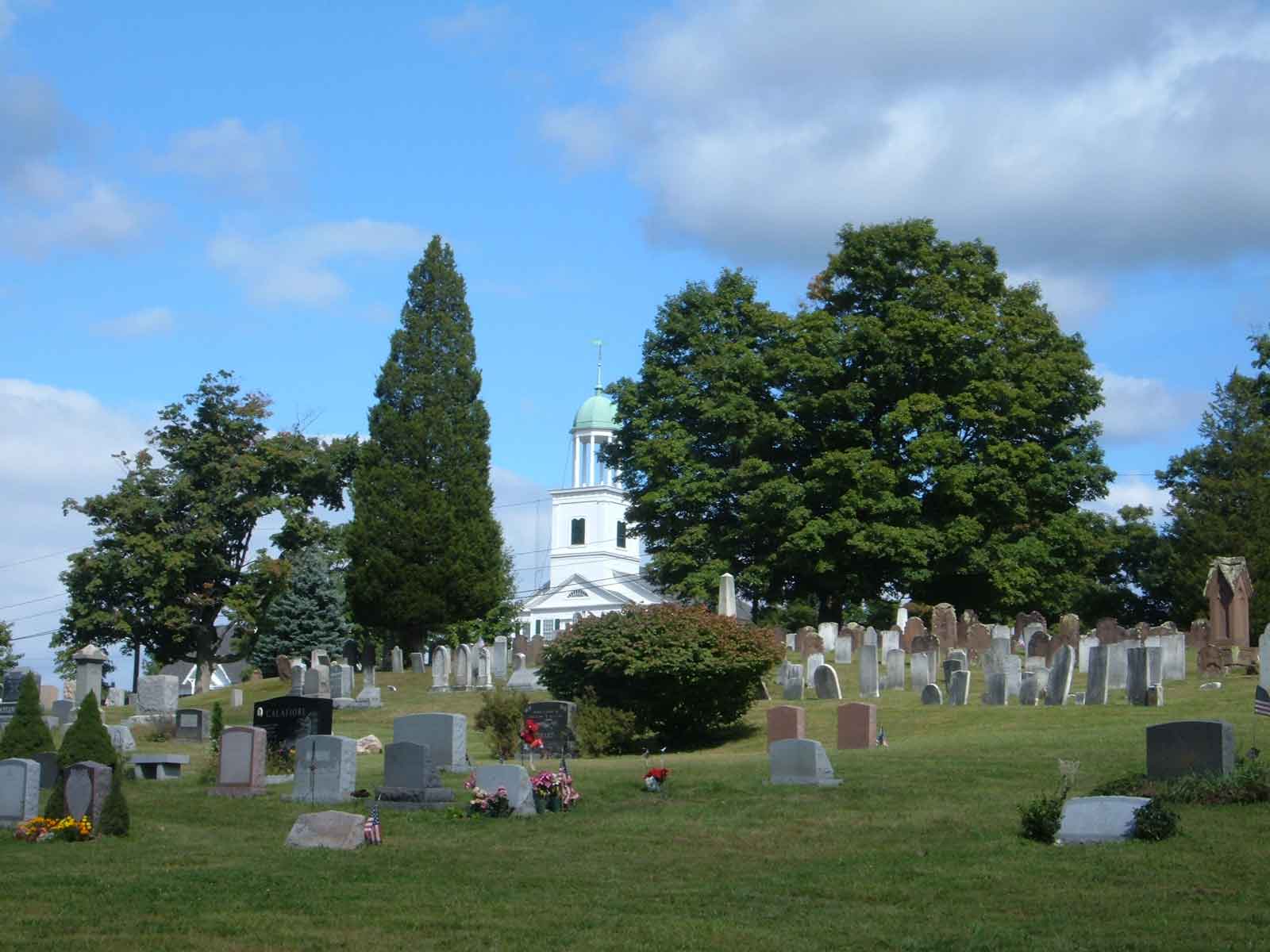Guilford’s Historic Cemeteries
Soon after Guilford’s settlement in 1639, the Town Green became the fledgling community’s burial grounds. Because the Green was also used for other purposes, including militia training and grazing livestock, use of the grounds as a cemetery was eventually deemed inappropriate. In the early 19th century, graves were moved from the Green to two new cemeteries in other parts of town. As Guilford’s population grew in the years that followed, other cemeteries were established including small, private family cemeteries.
Today, Guilford’s cemeteries offer a quiet retreat for visitors to stop at the grave sites of some of Guilford’s notable citizens and to contemplate the stories of their lives.
New information on those laid to rest in Guilford’s cemeteries is continually coming to light through the ongoing research of historians and genealogists. Following are locations of Guilford’s cemeteries and stories of some of those laid to rest in these cemeteries.
When visiting a cemetery, please keep the following in mind:
- A cemetery is a place for families to mourn and visit their loved ones. Be respectful of those around you.
- Do not to leave any trash.
- Do not disturb any memorials (such as flowers, coins, photos or other mementos).
- Do not take any rubbings of headstones – this can seriously damage old stones.
- Do not make any unauthorized repairs to headstones. Repairs require specialized materials and expertise.
- If the cemetery’s open hours are posted, visit only during these hours.
If you are conducting genealogical research:
The Historical Room at the Guilford Free Library, 67 Park Street, provides many resources that may help including diaries, books, letters, photographs, newspapers, school yearbooks, tax lists and federal census records. For hours of operation and available research assistance, visit www.guilfordfreelibrary.org/historical-room
- Boston Street (across from 344 Boston Street)
- GPS Coordinates: Latitude: 41.17216, Longitude: -72.40056
- Contact: Tracy Tomaselli (203) 671-9351
Established circa 1818, this cemetery is located .8 mile east of the Town Green. Alder Brook is Guilford’s largest cemetery and is the resting place of many of Guilford’s earliest residents. Many of the gravestones were originally located on the Town Green and were moved here in the early 19th century.
Notable burials include:
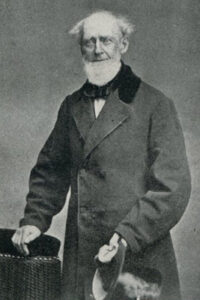
Fitz-Greene Halleck – Poet
July 8, 1790 – November 19, 1867
Fitz-Greene Halleck’s popularity as a poet reached its zenith in the 1820s and 1830s when he produced “Alnwick Castle” and the long poem “Marco Bozzaris,” considered his masterpiece by his contemporaries.
Born and raised in Guilford, Halleck moved to New York at the age of 20. A banker by trade, he began collaborating with writer Joseph Rodman Drake in a series of satires, “The Croaker Papers,” in 1819. Published anonymously, the series became popular for its irreverent view of New York society and culture. That year, he also published “Fanny,” a satirical narrative poem. The next year, Drake died. Halleck’s grief inspired one of his most famous poems, “On the Death of Joseph Rodman Drake.”
By this time, Halleck’s popularity as a writer drew him into the Knickerbocker group, a circle of New York literati that included Washington Irving and William Cullen Bryant. Though nicknamed “The American Byron,” he continued to work in banking and in other financial jobs.
In 1849, Halleck returned to Guilford and lived here until his death in 1867. In 1877, a statue of Halleck was dedicated in New York’s Central Park by President Rutherford B. Hayes. The memorial’s inscription states: “One of the few, the immortal names that were not born to die.” Halleck is the only American writer honored in the “Literary Walk” of Central Park.
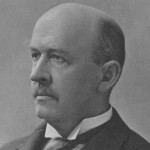
William Graham Sumner – Sociologist
October 30, 1840 – April 12, 1910
William Graham Sumner was a sociologist known for his classic work “Folkways: A Study of the Sociological Importance of Usages, Manners, Customs, Mores and Morals,” published in 1906.
Sumner was born October 30, 1840 in Paterson, New Jersey and graduated from Yale University in 1863. He studied abroad in Geneva and Gottingen in the fields of history and divinity and was ordained in the Episcopal Church in 1869. He served briefly as assistant rector of Calvary Church in New York City and then as rector of the Church of the Redeemer in Morristown, New Jersey, from 1870-1872.
On April 17, 1871 he married Jeanne Whittemore Elliott, and they had two sons, Eliot and Graham. From 1872 to 1909 he was professor of political and social science at Yale University, and in 1909 he became president of the American Sociological Society. On December 26, 1909, shortly before he was to address the American Sociological Society at their meeting in New York City, he collapsed. Sumner died on April 12, 1910 and was buried in Guilford in his wife’s family plot, the Elliott Family Circle. The entire family group was later moved to the Alderbrook Cemetery.
________________________________________________________________________________
- Off Route 77
- Just above Great Hill Road on left, dirt parking area, follow trail to the southwest
- GPS Coordinates: Latitude: 41.24469, Longitude: -72.41794 (parking)
- Contact: Robert Ashman (203) 453-0489
________________________________________________________________________________
- Bearhouse Hill Road
- GPS Coordinates: Latitude: 41.18607, Longitude: -72.4021
- Park at the end of Bearhouse Hill Road. Walk over the foot bridge, bearing left at the fork. At the next fork, bear to the right and proceed up the hill.
This small private cemetery is the burial site of members of the Foote and Ward family.
Notable burials include:
Roxanna Foote Beecher – Mother of Harriet Beecher Stowe
January 10, 1775 – September 24, 1816
Roxanna Foote Beecher was the wife of Presbyterian minister Lyman Beecher. The Beechers were the parents of nine children including author Harriet Beecher Stowe. Roxanna died when Harriet was only five years old. Harriet Beecher Stowe’s most famous book “Uncle Tom’s Cabin,” was published in 1852. The antislavery novel galvanized abolitionists and is cited among the causes of the Civil War.
Memorial Stone:
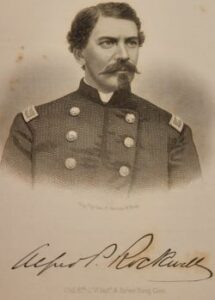
Alfred Perkins Rockwell – Geologist, Educator, Industrialist
October 15, 1834 – December 24, 1903
Although not buried at the Foote-Ward Cemetery, a memorial stone honors Alfred Perkins Rockwell due to his marriage a Foote family member, Katharine Virginia Foote. Rockwell excelled in many areas – as a war hero, a professor, geologist and industrialist. After receiving degrees from Yale and the Sheffield Scientific School in the 1850s, Rockwell started his career in geology by studying at the Museum of Practical Geology in London and at the prestigious Bergakademie at Freiberg, Saxony. He also visited coal mines in Northern England and Germany to study advanced mining technology and the economics of the industry.
At the outset of the Civil War, Rockwell was commissioned as Captain of the 1st Connecticut Light Artillery, earning a promotion to Colonel of the 6th Connecticut Infantry. On March 13, 1865, he was brevetted Brigadier General, US Volunteers, for “gallant and distinguished services in the field during the (Petersburg) campaign of 1864.”
Rockwell served briefly on the Board of Visitors at the U.S. Military Academy followed by stints as professor of mining at the Sheffield School and at MIT. After the fire of 1872 that consumed much of downtown Boston, Rockwell was appointed Chairman of the Board of the Fire Commissioners. He later served as president of the Eastern Railroad and as treasurer of the Great Falls (N.H.) Manufacturing Co., a textile firm. Rockwell wrote two books, Great Fires and Fire Extinction and Roads and Pavements in France. Rockwell died on Dec. 24, 1903 and was interred in the Yantic Cemetery, Norwich, Connecticut.
___________________________________________________________________________________
- 2804 Boston Post Road (corner of Moose Hill Road and Boston Post Road)
- GPS Coordinates: Latitude: 41.18601, Longitude: -72.44125
This small private family cemetery is the burial site of members of the Fowler family.
Notable burials include:
William Ward Fowler – Farmer and Businessman
April 3, 1833 – August 21, 1879
William Ward Fowler was a member of the New Haven County Farmer’s Club and a leading advocate for the cause of intelligent agriculture. He may also have been one of the unluckiest men in the state.
On July 7, 1843, Fowler was sitting on his verandah in the early evening when suddenly a keg of nails rolled from the roof and struck his head, inflicting some 70 cuts and bruises and rendering him unconscious. In October of 1844, after recently recovering from an illness, he dislocated his hip and was confined to his room for several weeks. Previously he had fallen several times and broken bones. Once, while digging a pit for a boulder he came near being crushed. On another occasion, while ascending a stone abutment he fell backward, displacing the bones at one of the hip joints. His barns were destroyed by fires three times and in 1872, his house caught on fire. In 1878, he was confined to his house by typho-malarial fever. On July 25, 1879, while driving between Branford and Guilford, he struck a rock and was thrown from his wagon and dragged about half a mile. Fowler died on August 21, 1879.
__________________________________________________________________________________
- 1454 Moose Hill Road (across from Stony Hill Road)
- GPS Coordinates: Latitude: 41.17978, Longitude: -72.43436
This small private family cemetery is the burial site of members of the Goldsmith family. Some members were exiled from Long Island during the American Revolution and moved to Guilford in 1782.
_____________________________________________________________________________________
- Moose Hill Road (off Route 146)
- GPS Coordinates: Latitude: 41.15915, Longitude: -72.43038
This cemetery was established circa 1801.
Notable memorials include:
Memorial Stone:
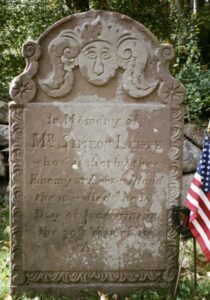
Simeon Leete
April 14, 1753 – June 19, 1781
Simeon Leete was shot by the British in a skirmish at Leetes Island near Guilford on June 19, 1781. He was buried on the Town Green. Leete’s tombstone was later removed to the Leetes Island. The pointed rock where Leete was mortally wounded can be found in the front yard at 60 Harbor View Road.
_____________________________________________________________________________________
- 251 Nortontown Road
- GPS Coordinates: Latitude: 41.18394, Longitude: -72.38266
This small private cemetery is the burial site of Rev. William H.H. Murray (“Adirondack Murray”) and his family.
Notable burials include:
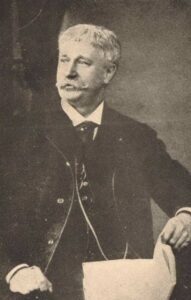
Rev. William H. H. Murray – Minister, Author, Outdoorsman
April 26, 1840 – March 3, 1904
“Adirondack” Murray was an orator, outdoorsman, Congregational minister and author of religious and outdoor books including “Adventures in the Wilderness; Camp Life in the Adirondacks” (published in 1869) which popularized the north as a resort and health cure destination. The widely distributed book created the “Murray Rush” of visitors to the Adirondacks. He has been called “The Great Evangelist of Outdoor Life for the People.”
Murray graduated from Yale in 1862 and attended East Windsor Theological Seminary. He served as minister to churches in Greenwich and Washington, Connecticut. In the mid-1860s he became pastor of the First Congregational Church in Meriden, Connecticut and later was pastor of the Park Street Church in Boston. He retired from the clerical profession at the age of 40 and traveled for seven years. The last 12 years of his life were spent on his Guilford homestead.
______________________________________________________________________________
- Nut Plains Road (east side of intersection of Nut Plains and Goose Lane)
- GPS Coordinates: Latitude: 41.18795, Longitude: -72.40660
- Contact: John Sullivan Jr. (203) 453-4460
This cemetery was established circa 1818.
Notable burials include:
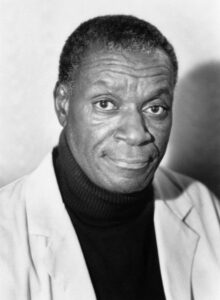
Moses Gunn – Actor
October 2, 1929 – December 16, 1993
Gunn made his debut on Broadway in 1962 and was an Obie Award-winning stage player. He co-founded the Negro Ensemble Company in the 1960s. A veteran a many feature films, some of his most memorable roles were in “Shaft” (1971), “Roller Ball” (1975), “Ragtime’ (1981), “Heartbreak Ridge” (1986), “Bates Hotel” (1987) and “Perfect Harmony” (1991). He was nominated for an Emmy Award in 1977 for his role in the TV mini-series “Roots.” Television credits include “Kung Fu,” “Little House on the Prairie,” “Good Times,” “Father Murphy” and “Homicide: Life on the Street.”
____________________________________________________________________________
- Ledge Hill Road (Western side of intersection of Ledge Hill and Long Hill Road at the crest of the hill)
- GPS Coordinates: Latitude: 41.22065, Longitude: -72.43658
- Contact: Donald Homer (203) 457-0107
Located in picturesque North Guilford, this cemetery contains the graves of several American Revolutionary War patriots. Also located here is the grave of Shem, an African American slave owned by Rev. Joseph Elliot. (GPS Coordinates: Latitude: 41.22044, Longitude: -72.43682)
____________________________________________________________________________________
- Route 77 (across from 5 Durham Road)
- GPS Coordinates: Latitude: 41.17968, Longitude: -72.41281
- Contact: Saint George Church (203) 453-2788
Located north of the Town Green, this Catholic cemetery was established circa 1885.
_________________________________________________________________________________
- Three Mile Course (off Boston Post Road)
- GPS Coordinates: Latitude: 41.17224, Longitude: -72.41500
- Contact: Shelley Brothers Monuments: (203) 453-9129
This cemetery was established circa 1818.
Notable burials include:
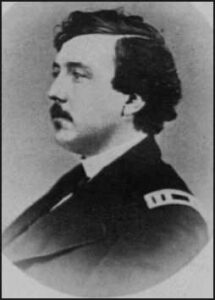
Edward Merwin Lee – Civil War General
August 23, 1835 – January 1, 1913
Lee was a served as Lieutenant Colonel of the 5th Michigan Volunteer Cavalry, which was a part of the famed “Michigan Wolverine” brigade commanded by General George A. Custer. He was brevetted Brigadier General, US Volunteers on March 13, 1865, for “gallant and meritorious services during the war.”
_________________________________________________________________________________
